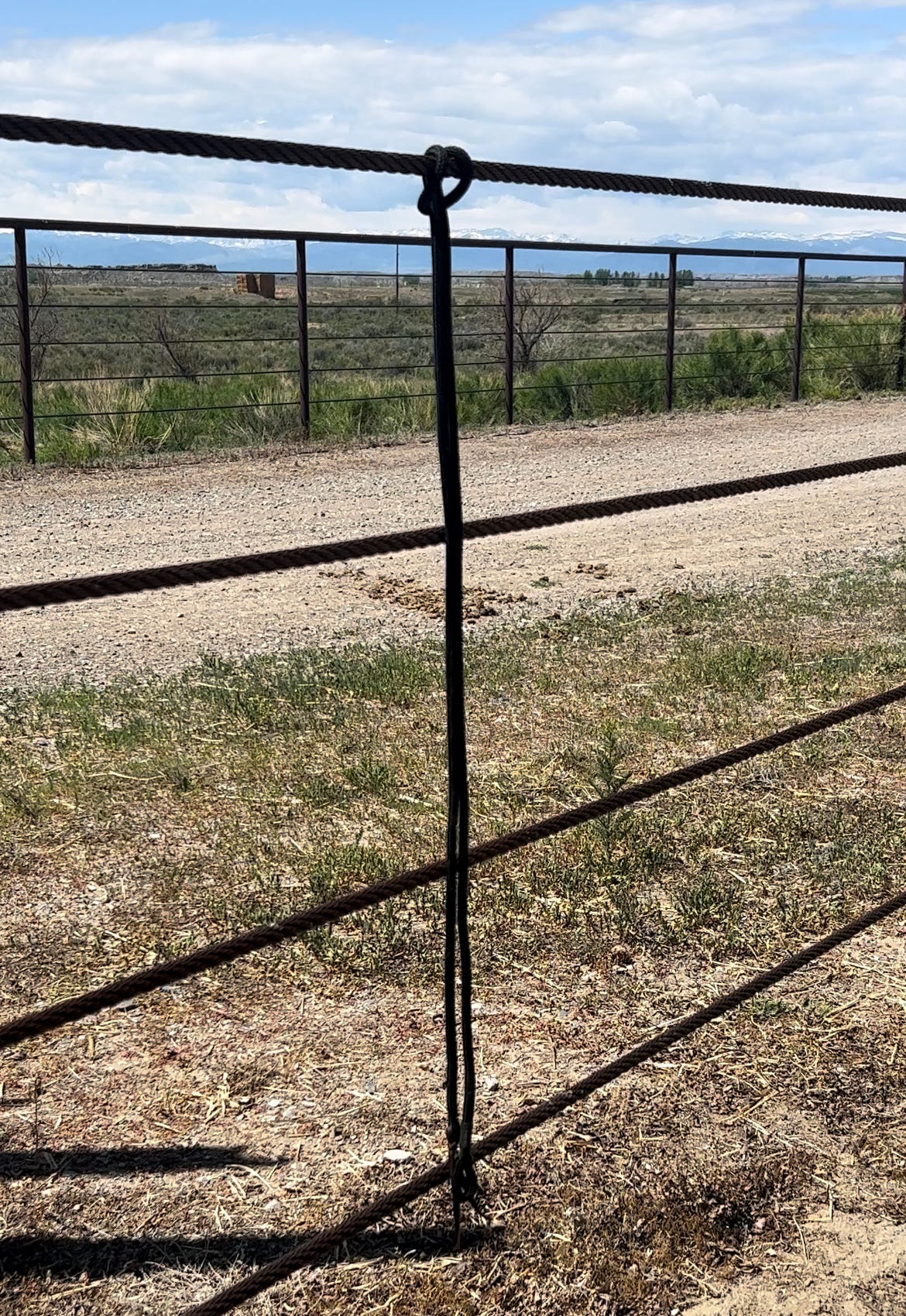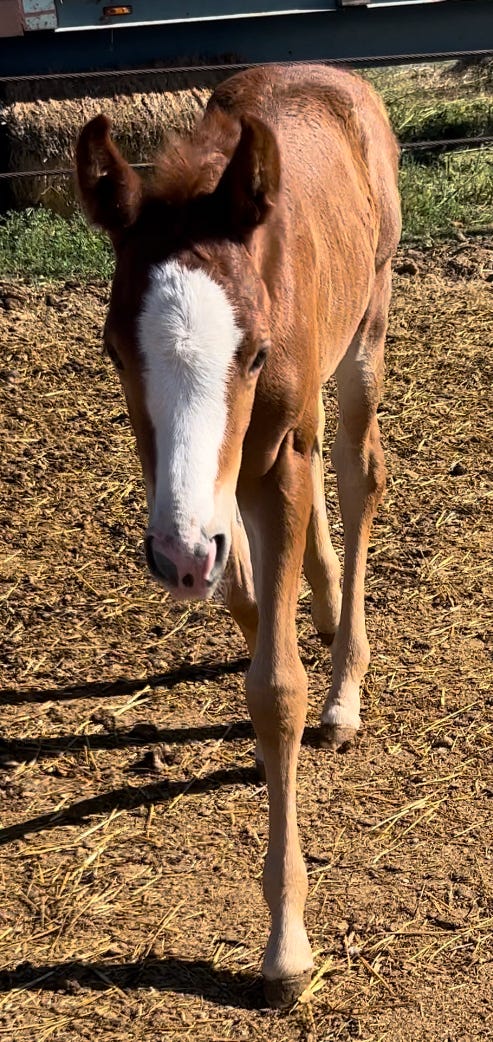There is a black “savvy” string hanging on our outdoor arena rail. I can see it every time I walk into the arena with my horses.
If you’re not familiar with what a savvy string is, it is awarded to those who pass each level of the Parelli Program. There are four levels that encompass four different areas of horsemanship: online, liberty, freestyle (riding without anything on your horse’s head), and finesse (riding with “collection”). A black savvy string is awarded to those who have passed Level 4, the highest level of the program.
I started in the Parelli program at age 45. I attained Level 4 at age 50 with my challenging Half-Arab, Walker. By 54, I had earned 2 stars in the instructor program. I made a personal decision to leave the Parelli organization at 58 for many reasons that will remain private. I still believe the Parelli Program is the most comprehensive, systematic program relating to building the horsemanship skills needed to be safe, competent, and well-rounded in our interactions with horses. It’s a great beginning to a horsemanship journey.
Having said all that, why is that savvy string hanging there? It’s not so I can revel in my past conquests. On the contrary, it’s there to remind me that I’m an eternal student of all things horse. It’s there to remind me to be humble.
Most importantly, it’s there to remind me that I want to always be as light as that string, light with my hands, light with my attitude, and light with the requests I make of my horse.
Here are some techniques I use to become lighter with my horses:
Start an ask as lightly as I can. For me, it starts with just a thought. I know horses are exquisitely sensitive. I’m reminded of that every time I see them swat a fly from their hair, a creature that doesn’t weigh much more than an eyelash. I’ve joked that what I really should do is become a fly trainer. Four trained, determined flies could probably get horses to do almost anything.
Ask my horse to pay attention to the lightness of my ask. If all I ever do is scream at my horse with my body language, then the horse will only respond to a scream. If, on the other hand, I point out to my horse that they missed a light request, they will start looking for lightness from me. To learn more about how to do this, read here. Horses, like children, have to learn that unwanted actions have consequences. My responsibility is to act justly, and not out of negative emotions like anger or frustration
.
If the horse doesn’t respond appropriately, I assume it’s because I’m not being clear. This usually means breaking a task down to more fundamental parts so the horse can gain a better understanding of what I want. To help you learn how to break down a task, read here.
Be consistent. This is a critical element of being light. If I don’t communicate consistently, how can I possibly believe my horse will respond consistently? A confused horse doesn’t make for a good partner. The responsibility for my horse’s understanding is on me.
I don’t overlook my horse’s distress, ever. If my horse is showing signs of distress, I believe him, and I don’t take it lightly. This is in my best interest and in the interest of my horse remaining a partner and not reverting to instinct. It can mean the difference between moving beyond fear to understanding or experiencing a dangerous and potentially harmful event. This isn’t a matter of ego. To learn more about this topic, read here. If a horse is in distress, lightness is completely off the table.
I’m always seeking relaxation with my horses. Relaxation is my guiding star when training my horses. A horse in sympathetic (instinctual) mode isn’t open to learning and can be dangerous to be around. A horse in parasympathetic mode isn’t worried about their survival and is much more likely to behave like a partner, open to learning and behaving willingly.
Striving to be light with my horses is a good way to constantly improve my relationship with them. It requires good thinking, emotional stability, awareness, and skill.
For more information about the amazing horses that have been and are being bred on the HAAP farm, go to www.arabpinto.com
If you have questions for me about any of my posts, please feel free to contact me at isabellefarmer@gmail.com or visit our Facebook page at www.facebook.com/arabpintos








